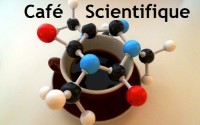A novel microfluidics device to study the impact of 7.00pm mechanical stresses on blood stem cells
- Date
- 4 Oct 2022
- Start time
- 7:00 PM
- Venue
- The Guildhall
- Speaker
- Dr Rasha Rezk, University of York

A novel microfluidics device to study the impact of 7.00pm mechanical stresses on blood stem cells
Dr Rasha Rezk, University of York
The first bone marrow transplant was performed in 1956 by Dr E. Donnall Thomas in New York, where diseased stem cells in a patient were replaced by healthy bone marrow from a matched twin sibling. However, not everyone has a matched donor. To overcome the challenge of finding a suitable donor, scientists have been extensively studying ways to grow healthy stem cells outside the body. Despite our improved understanding of the chemical and molecular modifiers, researchers have yet to identify methods to produce large quantities of highly purified functional stem cells. Tools to explore the biomechanics of HSCs, however, are dramatically lagging and the development of such tools offers the potential to explore mechanical forces as a means to alter cell fate. In York, we have developed a state-of-the-art microfluidic device that allows us to apply compressive forces on blood stem cells to study the impact of physical stress on cells, a property critical for facilitating the scaled-up production of stem cells outside our bodies.
We are meeting in a new venue in the Council Chamber at the Guildhall. Doors open 7pm.
Talk and Q and A from 7.15pm to 8.15pm
Member report:
Dr Rezk is a Materials Engineer with a PhD from the University of Cambridge. The team she is working with at the University of York are researching an alternative source of stem cells outside the body, for use when healthy bone marrow is needed to heal diseased cells. At present it is very difficult to match bone marrow donors. Siblings may be a possible match but often are not. The role of the Materials Engineer is to look at the mechanics of creating these blood cells i.e., which forces to apply. Research from Horton et al in 2021 has looked at hydrostatic pressure, sheer stress, etc. but the smallness of these cells requires new tools.
Malaria research has produced microfluids which has suggested possible ways forward for a double layer microfluid device. To prove this concept has involved changing the design several times. There are issues about blood cell survival in culture and the viability of getting different specific cells through compression in the device.
It was fascinating to learn about how working at this micro level may in future lead to a device that will be able to be used in scaled up production of stem cells outside the body.
Catherine Brophy